If you look for short treks with amazing landscapes near the capital, Kathmandu, you can choose one of the following:
- Langtang Valley Trek (6 days)
- Tamang Heritage (5 days)
- Gosainkunda Lake (3 days)
- Helambu Trail (3 days)
Depending on the time you have, take only one of them or combine one with another. Completing all of them will add up to 17 days. It is a popular choice to take the Langtang Valley Trek with the Tamang Heritage Trail. It lets you get close to the Tamang ethnic culture and enjoy the view of the 6.000-7.000m meters high Ganesh and Langtang mountains. The highlight of the trip is to reach Tserko Ri, the viewpoint at 5.000m altitude.
Read more about the best short and long treks in Nepal
Langtang was a small village with not more than 400 inhabitants nestled in the beautiful Himalayas. On 25th April 2015, it was destroyed by the avalanche triggered by a devastating earthquake. Half of the population died, the houses were buried under the rocks. Already five years have passed, and despite financial support, it still takes time to recover. Not to mention the psychological effects. If you decide to take one or both of these relatively easy, mysterious, and unspoiled trails, you actually help the locals reconstruct their lost village and restart their lives.
- The highlights of the Langtang Trail
- What is the best season to complete the Langtang Trek?
- How difficult is the Langtang Valley route?
- What is the cost of the Langtang valley Trek?
- What you should know about the Langtang Trek
- The disaster of Langtang village
- The highlights of the Tamang heritage trail:
- The Tamang culture in Nepal
- The itinerary of the Tamang Heritage Trail
- The highlights of the Gosainkunda Lake Trek
- The itinerary of the Gosaikunda trek:
- The highlights of the Helambu Trek:
- The Ruby Valley Trek
- The highlight of the Ruby Valley Trek:
The Langtang Valley Trek
The highlights of the Langtang Trail
- The panorama view of the Langtang and Ganesh Himal mountain range
- The unique wildlife with langurs, bears, mouse deers
- The view of the Langtang glacier from the Langtang valley
- Tibetan Buddhist monastery
What is the best season to complete the Langtang Trek?
As with most of the other Treks in Nepal, the best time to undertake this trail is one of the following 7 months: September, October, November, December, March, April, and May.
How difficult is the Langtang Valley route?
It is one of the easier treks with a difficulty level of 6/10.
What is the cost of the Langtang valley Trek?
– 5 days Langtang valley: 490 USD
– 10 days Langtang valley + Tamang heritage trail: 730 USD
What you should know about the Langtang Trek
- The Langtang valley is the nearest Himalayan region north of the Kathmandu valley that you can reach with a 7-8 hours’ drive from the capital. It was the first region to be declared a national park in Nepal in 1971.
- The Langtang people mainly belong to the Sherpa, the Lama, and some to the Tamang ethnic group. Nepal is a real cultural mosaic, a blend of 59 indigenous and more than 120 other ethnic groups.
- This is a traditional Buddhist region, where the Lamas meditate and pray all year around. Buddhists are normally vegetarians. They refuse to kill animals. They only eat the meat of animals that suffered an accident, that was attacked by other animals or that fell into a ravine.
- Before tourists arrived, it was a remote and untouched place. People used to live as nomads under harsh conditions. There were no schools or hospitals. They had absolutely no access to the outside world. As tourism started to boom, parents in Langtang could send their children to school and get extra income from providing food and accommodation.
- Herds of yaks grazing on the high pastures and donkeys carrying loads are common sights. Yaks are essential in the mountains. You can taste the healthy hot yak milk, and it is also used to produce cheese. A Swiss man founded the first cheese factory in the 1950s. This helped the yak herders to get more income, and the village underwent big developments. They could build lodges and teahouses for tourists. People started to fly in with helicopters for a day trip. Langtang’s cheese has become a brand in Nepal by now.
Read more about the famous Langtang cheese: https://www.nepalitimes.com/banner/the-story-of-langtang-cheese/
The disaster of Langtang village
Nepal has not fully recovered from the aftermath of the 7.8 magnitude earthquake that ravaged the country on 25th April 2015. The country lies in a highly seismic zone. Earthquakes are frequent. At that time it took the lives of 9,000. Another 22,000 people got injured as the earthquake triggered an avalanche on Mount Everest.
Langtang Village was simply swept by the landslide and only one single house was left. Until then Langtang village was a popular trekking destination in Nepal. The village had around 400 inhabitants, 55 hotels and guest houses. It was almost lunchtime when the earthquake hit the village. The time, when most trekkers were arriving at the tea houses and restaurants. According to the villagers, 178 local people died and 80 foreign tourists have also lost their lives. There were only five survivors under the ruins of Langtang. Many suffered lifetime injuries or became handicapped. Grandmothers were left alone to raise grandchildren. The rock field that buried one of the biggest villages of the valley, remains a sad reminder of the tragedy. Some old people of Langtang believe that they might have done something bad in the past for which they were punished.
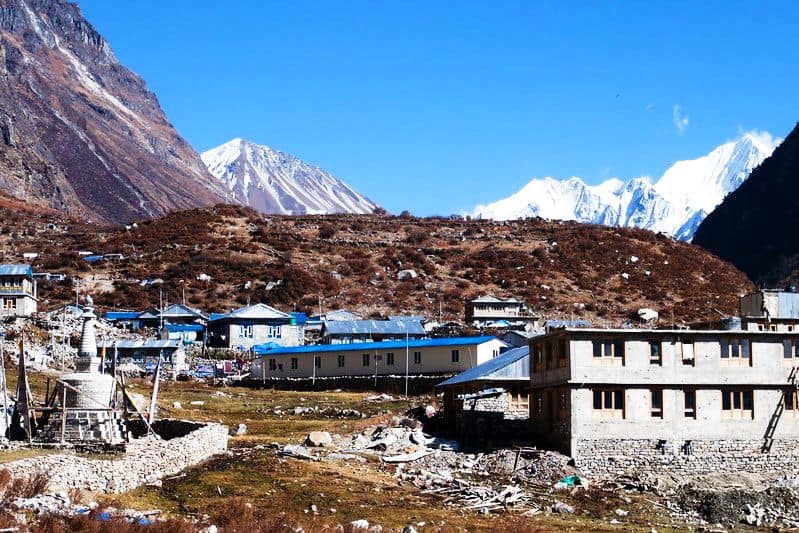
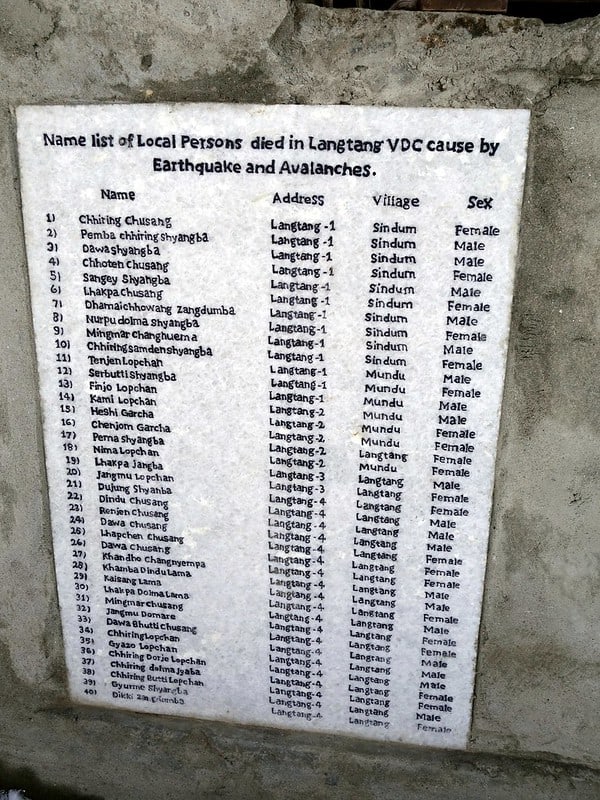
By taking this trail you can greatly support the locals to reconstruct their houses and recover their lives. They managed to set up some lodges and several houses, but there is still a lot to do and many are still struggling with their sorrow. But those who spent their lives in the mountains can only live there.
Almost all animals were lost in the earthquake, which makes it impossible to survive in the mountains. Thanks to the financial support they could purchase yaks and could continue farming.
The itinerary of the Langtang Trek (6 days)
1.day: Kathmandu – Syabrubesi (1400m)
Since Langtang valley is the nearest point of the Himalaya region from Kathmandu, you do not need to take a plane. It is only a 6-7 hours drive from Kathmandu. On the way, you pass several local villages and enjoy the beautiful scenery, but the adventure starts the day after.
2. day: Syabrubesi to Lama Hotel (2470m)
The first part of the trail passes through the bamboo forest, where you can have lunch in one of the local restaurants. It is a good opportunity to enjoy the hot spring, one of many in the Himalayas. If you are lucky, you may spot a red panda in this section, since bamboo leaves are one of their main nourishments. Monkeys and langurs are popping up on the way and at the rocky hilly part, you can also spot wild honey. Be aware of the bears, which attack the locals from time to time!
At the end of the day, you reach the Lama Hotel (2420meter), which was the first lodge here and carries the name of the founder, the Lama family. Dal Bhat, the most well-known Himalayan food and other freshly cooked meal, not to mention hot shower are also waiting for you!
3. day: Lama Hotel – Langtang village (3400m)
You continue to hike in the pine forest most of the day passing by waterfalls, and rhododendrons along the Lantang Kola river. As soon as you reach 3000 meters altitude, you leave the forest behind, and the landscape opens up. From this point, you get a deeper insight into the Tamang culture and its lifestyle. Locals mainly earn their bread with agriculture and you will see plenty of potato fields around. You can stop at the Ghoda Tabela for lunch before continuing to Langtang Village. The trek got its name after the village that was destroyed in 2015.
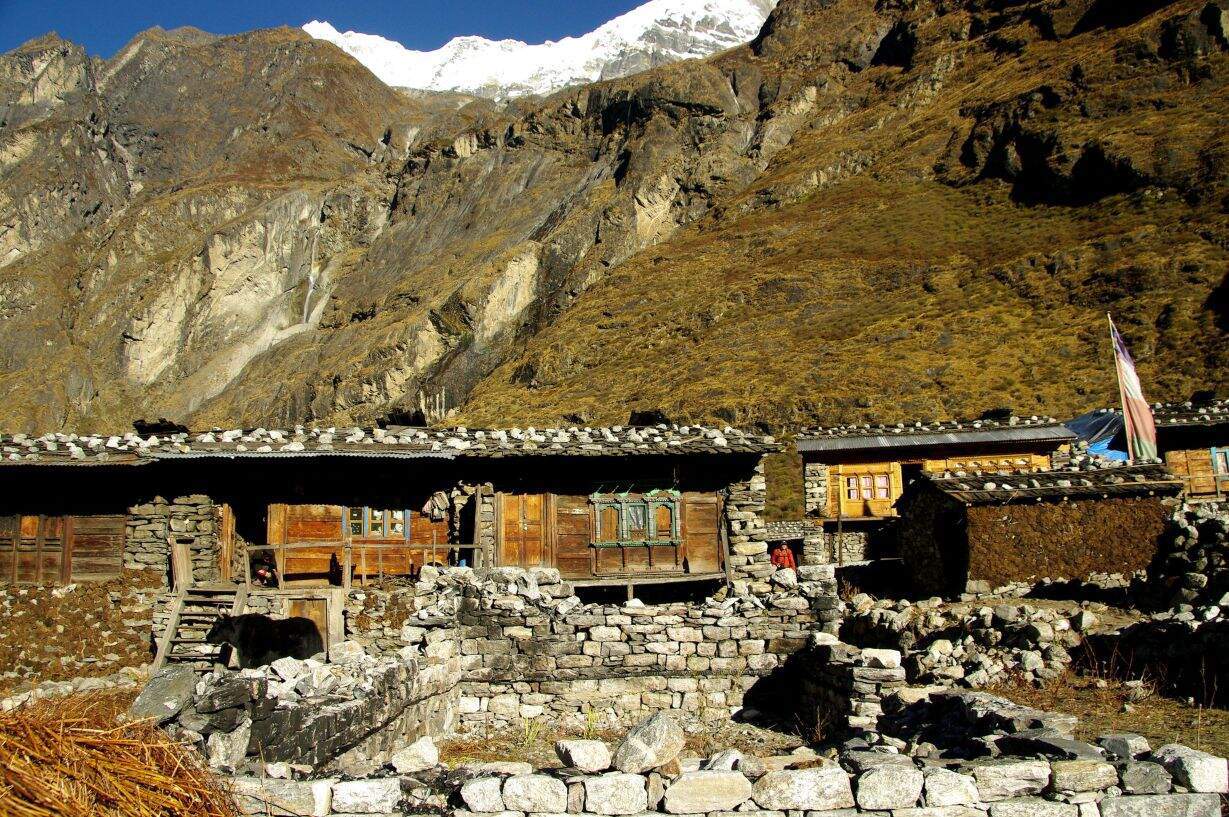
4. Day: Langtang village to Kyanjin Gompa (3800m)
You are about to undertake one of the most amazing parts of the whole trail. The region is mainly inhabited by Tamang people, who follow traditional Buddhism. This means you will see several chortens (Buddhist shrines) and prayer wheels until you reach the Kyangjin Gompa. This ancient remote village truly takes you back in time.
Kyanjin Gompa is the last point of this trek from where you can enjoy views of some of the spectacular snow-capped mountains such as Langtang Lirung (7,245m), Dorje Lakpa (6,990m), Langtang Ri (6,370m), the Ganesh Himal, and beautiful Langtang valley.
Take a visit to the government yak farm and taste the yak cheese and hot yak milk. There are 2-3 monks in the village’s monastery all year round, and some 20 come here during the festival time. You can easily talk to the monks to learn more about Buddhism. They are reciting mantras, singing joyful songs when there is a wedding, and deeply melancholic songs when there is a funeral.
5. day: Kyanjin Gompa to Kvanjin Ri /Langtang Ri (7205m)
It takes approximately 5 hours to reach the summit, Kvanjin Ri, or some hundred meters further another viewpoint, Tserko Ri. Despite the relatively tough trek, the views make it worthwhile! You are surrounded by the giant snow-covered peaks: the Yala Peak (5,520m), the Langtang Ri (7,205m), the Langtang Lirung (7,227m), and Naya Khang (5,844m). This is definitely the highlight of the trip! Enjoy a packed lunch while admiring the majestic mountains before you start the descent back to Kyanjin Gompa, where you will spend the night again.
6. day: Return to the Lama hotel
On the way back you can opt to cross Thulo Syabru village instead of Shabrabesi to see something different. Then you drive back to Kathmandu.
You can complete separately or extend the Langtang valley trek with the Tamang Heritage, the Gosainkunda Lake, the Helambu, and Ruby trails.
Tamang Heritage Trail (+ 5 days)
You have the option to extend the Langtang Trek for 5-6 days and complete the culturally interesting Tamang Heritage Trail. This is where you can learn a lot about Tamang people’s traditions.
The highlights of the Tamang heritage trail:
- Visit one of the most interesting ethnic groups of Nepal, the Tamang people
- Hike up to a viewpoint to look over Tibet
- Have a dip in the natural hot spring in Tatopani
The Tamang culture in Nepal
The Tamang are actually the largest indigenous ethnic group making up approximately 6% of the population. Out of the more than 100 local ethnic groups in Nepal, only a few follow unique traditions and the Tamang is one of them. They are spread around the Kathmandu valley, in parts of India and Bhutan, and speak their own language. They are extremely friendly, welcome the tourists with warmth and joy while offering a cup of tea even if they do not have many resources.
Here you pass by several Tamang villages with prayer mills, chortens (monasteries), prayer flags, and mani stones (carved stone plates with six-word-mantras) along the trail. Surprisingly, this area was not much affected by the infamous earthquake of the region and was reopened some months later. The Tamang Heritage Trail lies in what was previously a restricted area near the Tibet border and was opened up to visitors less than 10 years ago. It means that is one of the least visited hiking treks in the region of the Himalayas.
Try to come during the Losar Festival (the Tibetian New Year), when Tamang people wear local costumes, go to monasteries, watch the famous mask dances and sing the Tamang Selo (Tamang songs). Their music and songs connect all the different ethnicities and have become one of the most popular in Nepal.
The other important festival is Drukpa Tsheshi. They all meet at Kyanjin Gumpa to celebrate together for 6 days. This event creates a strong bond between the villagers of the area. Locals open up their homes for visitors and many set up temporary tents. The men compete in archery and everybody worships the white yak as a symbol of the Himalayas. The festival takes place before harvest time and they expect these rituals to bring abundant yield.
Tamang men traditionally wear a black hat and a sheep wool coat. The women wear jewelry on their heads and on their nose.
The itinerary of the Tamang Heritage Trail
You can join the culturally rewarding Tamang Heritage Trail before or after completing the Langtang Trail, which takes an extra 5 days. The area is renowned for its beautiful cedar forests and flowers and incredible views of Himalayan peaks including the mighty Shishapangma, one of the 8000-meter peaks, Ganesh, Langtang, and Jugal Himal.
1. day: From Shabrabesi (1460m) to Gatlang (2238m)
You can expect to have a sunny day, hiking 3 hours uphill and then 2hours easy walk in the open land without crossing the forest. At the end of the day, you reach Gatlang, the second biggest village in the area inhabited by Tamang people. If you are a small group you can ask the locals to give you some cultural programs, including dancing and singing at dinner time.
2. day: From Gatlang to Tatopani (1190m)
You continue hiking roughly 5 hours in the open landscape mainly passing by farming lands – potato, buckwheat, and malt fields, which is the main source of income for the locals. At such high altitudes, they only grow once a year.
Tatopani means “hot water” in Nepali. To have a dip in the village’s hot spring is one of the highlights of the trip.
3. day: From Tatopani to Nagthali (3165m)
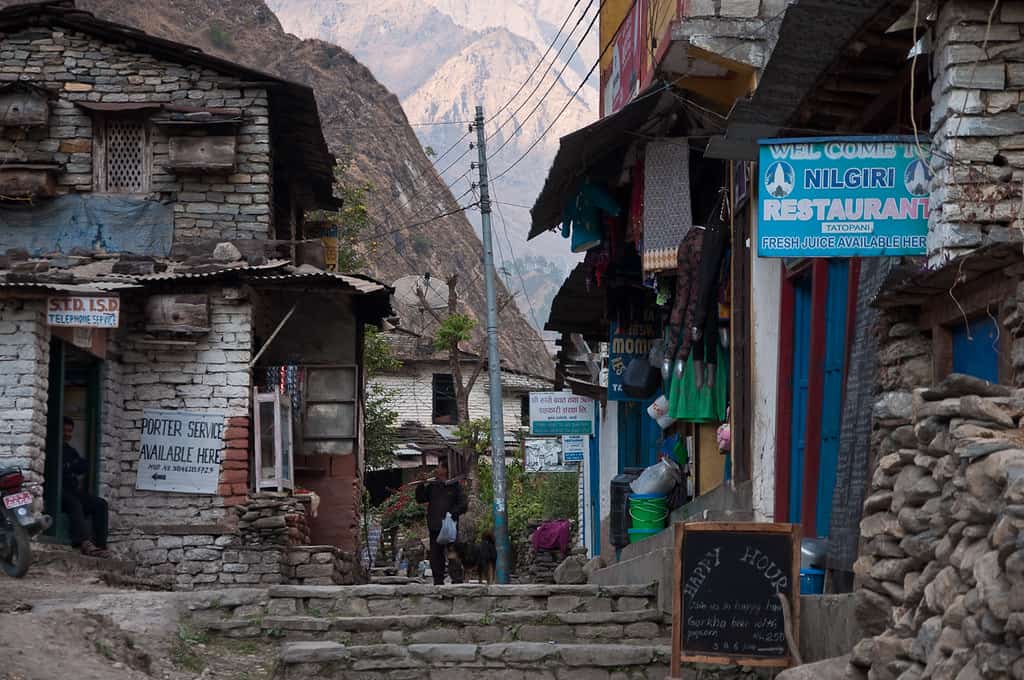
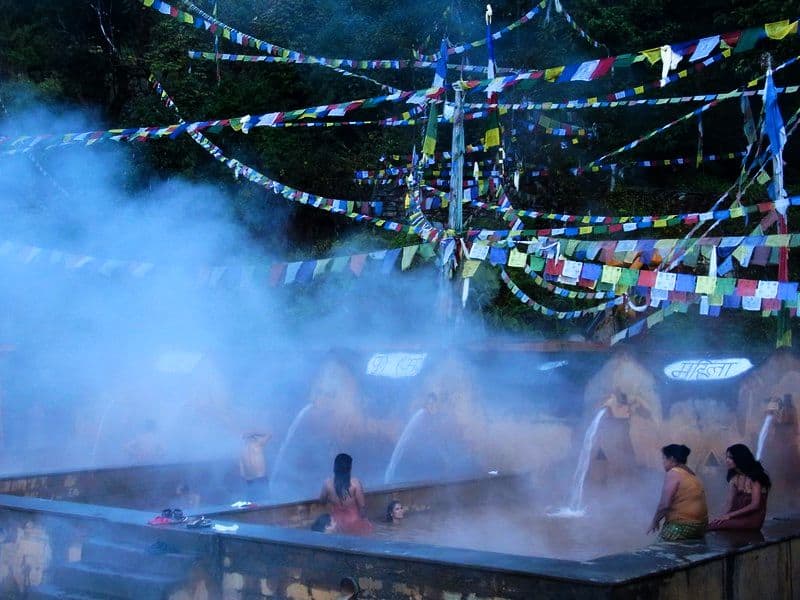
On this day you reach the highest point of the Trek, Naghtali at 3165m. During this day you hike mainly through forests. Once you reached Naghtali, and you don’t feel tired, you can continue to the Yang Ri viewpoint. There you have an amazing view of the Shishapangma peak, one of the 8000-meter-peaks of the Himalaya, the Ganesh Himal ranges and the Tibetan landscape. Close to the border to the Tibet Autonomous Region of China, you can even see the Rasuagari border crossing.
4. day: From Naghtali to Thuman village (2338m)
You have an easy downhill trekking mostly through a forest area. Thuman is the biggest village of the Trail and this is a great place to really get the feeling of the Tamang cultural and daily activities. Try to learn the Tamang dance style and listen to their melodies and simply get in contact with the friendly locals.
5. day: From Thuman to Briddim village (2229m)
You have an up and down trail awaiting this day. It is up to you if you continue straight to the Lama Hotel to join the Langtang Trek or stop before at the Sherpa Gaun village for the night.
Gosaikunda Lake Trek (+3 days)
The Trek got its name after the Gosaikunda lake.
108 lakes are scattered in the region, out of which 6-7 are bigger ones. Gosaikunda lake is one of them. You often come across the word, “Kunda” in Nepal, which means “holy place”. Every July and August hundreds of thousands of Hindus and Buddhists gather at this place at full moon. The viewpoint is half an hour’s walk from the Gosaikunda lake.
During the festival, you can hardly find a place to eat and sleep. Anyway, the guesthouses only have small capacities. It is not a problem for the Nepalese. Six people can share one bed, and if needed they sleep on the floor. You better bring your tent and expect to get nothing else, than the local food, “dal bhat”.
The highlights of the Gosainkunda Lake Trek
- a beautiful view on the Ganesh Himal, the Langtang range, the Manaslu, the Annapurna 2, and the Fishtail mountain
- visit the Gosaikunda lake, regarded as a holy place for both Hindus and Buddhists
The itinerary of the Gosaikunda trek:
1. day: From Lama hotel to Thulo Syabru village (2200m)
3 hours downhill, last 2 hours uphill with a lunch stop in the Bamboo restaurant. At the Langtang Kola river, you may witness the ancient method of honey hunting during the month of May, June, and July.
2. day: From Thulo Syabro to Sing Gompa (3350m)
You have a 3-4 hours uphill walk ahead of you. If you want to spot a group of red pandas, you can leave the trek and hike for 2 extra days. Otherwise, you hike through the pine forest to the Sing gompa Tibetan monastery and you can visit a government yak farm to observe the process of making local handmade cheese.
3. day: From Sing gompa to Gosaikunda lake (4400m)
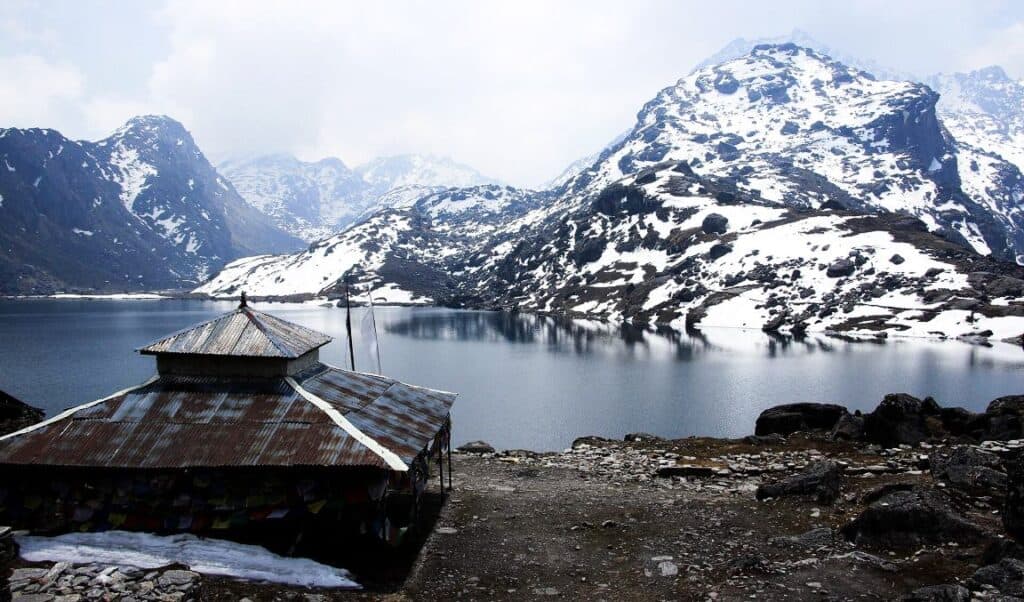
The Helambu Trek (+ 3 days)
Another option to extend your Trek is to continue from the Gosaikunda lake to the Helambu Trek.
The highlights of the Helambu Trek:
Meet the Sherpa ethnic people, who are well-known for their warm welcome. Similar to the Tamang ethnic group, they are Buddhists and do not kill animals out of respect. They have extremely tidy houses and decorated kitchens equipped with brass and copper pots, plates, and spoon.
It is a popular trail with well-equipped lodges to stay at.
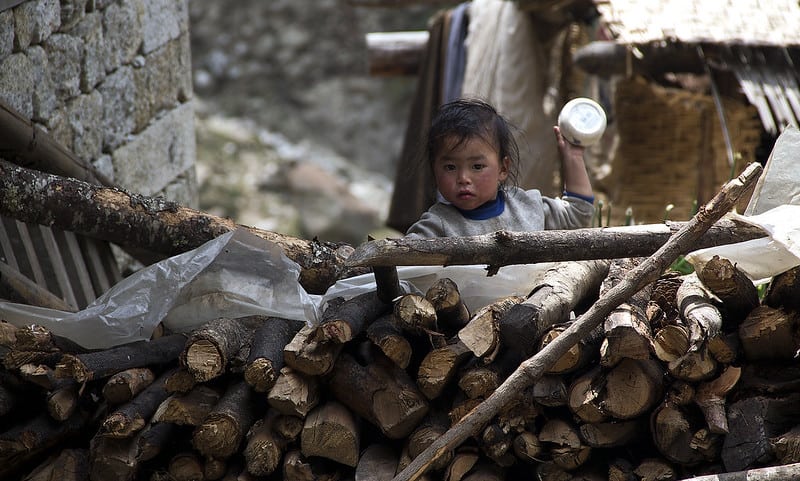
1. From Gosainkunda lake to Ghopte (3530m)
You walk steeply uphill to the Lauribina-la pass (4610m). The panoramic view from the top is the highlight of the Gosaikunda Trek. From there you go downhill the rest of the day for 3 hours.
2. day: From Ghopte to Mangingoth (3000m)
It is a more relaxing day, where you walk a maximum of 5 hours with little elevation. If you are lucky, on the way you directly pass by a famous red panda viewpoint, or you take an extra ½- 2 hours detour to approach them.
3. day From Mangingoth to Kutumsang (2500m)
You walk 4 hours downhill till you reach Kutumsang village at 2500 meters. You can stay one night or drive off-road in 4 hours the same day back to Kathmandu.
The Ruby valley Trek (+10 days)
The Ruby Valley Trek
Instead of heading north, you can head west after the 2nd day of the Tamang heritage trail to reach the Ruby valley. The Ganesh Himal region has deposits of gem ruby, hence its name. It is one of the off-the-beaten routes in the Langtang region. Tourists recently started to arrive. For this reason, you should cover this Trek with a mountain guide.
The highlight of the Ruby Valley Trek:
- Being one of the pioneers to take this trail
- Enjoy the friendliness of Tamang and Gurung ethnic people in homestays
- Superb Himalayan views from Pangsang La
- Meet a traditional shaman.
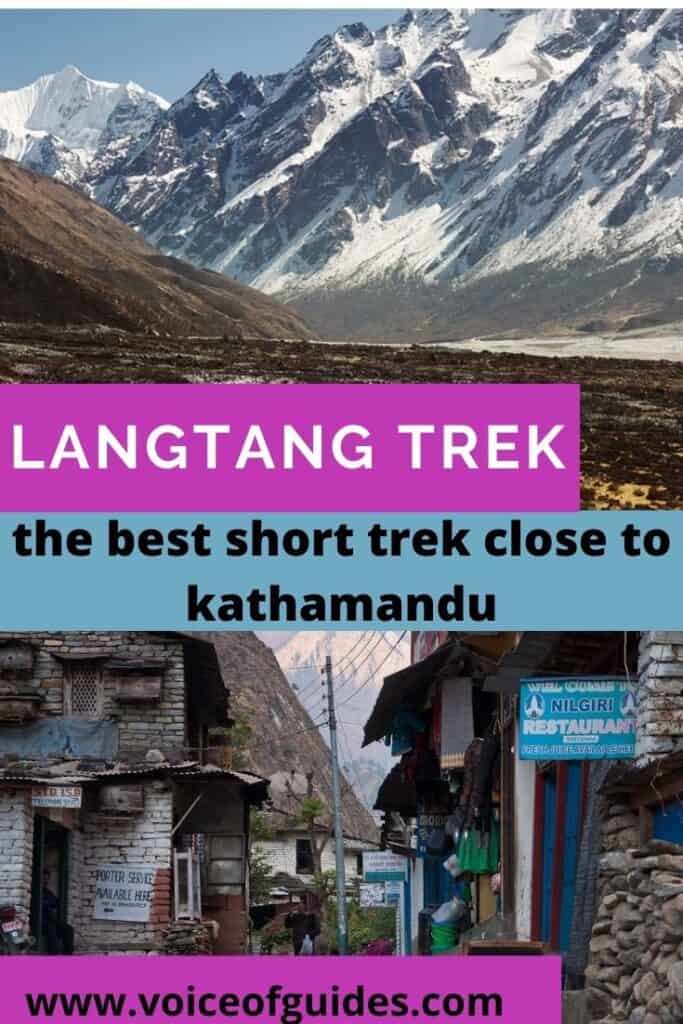


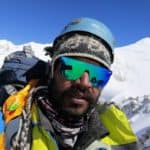
Pingback: The best short and long treks in Nepal | Voice of Guides